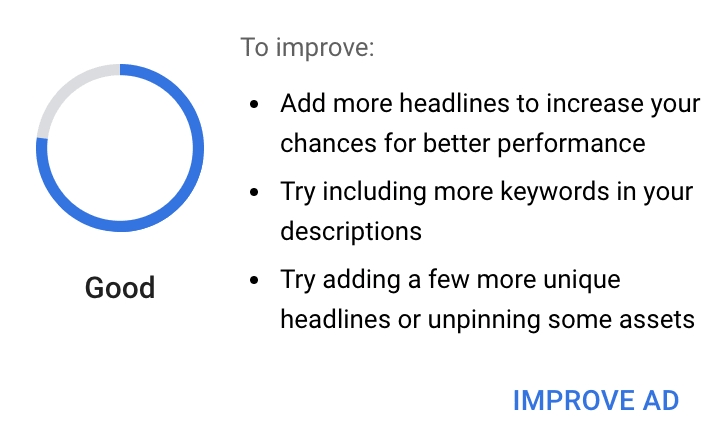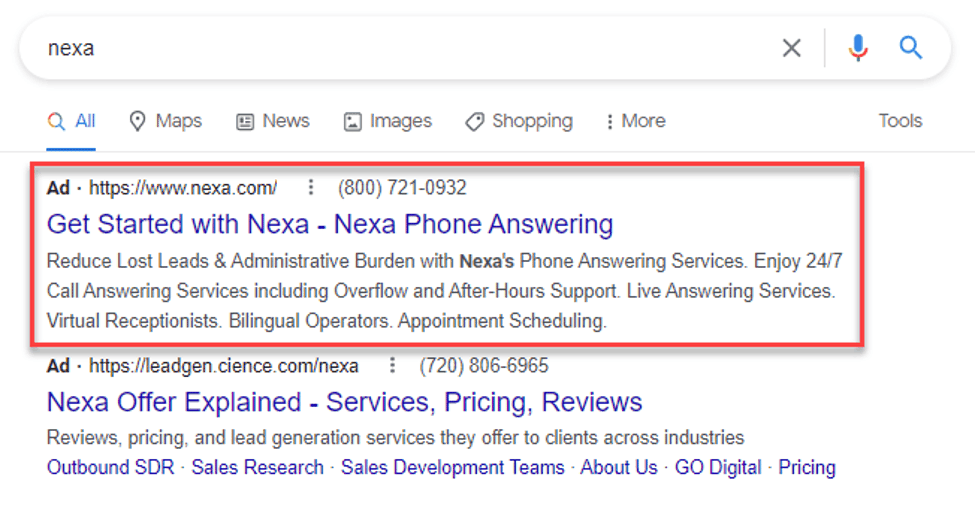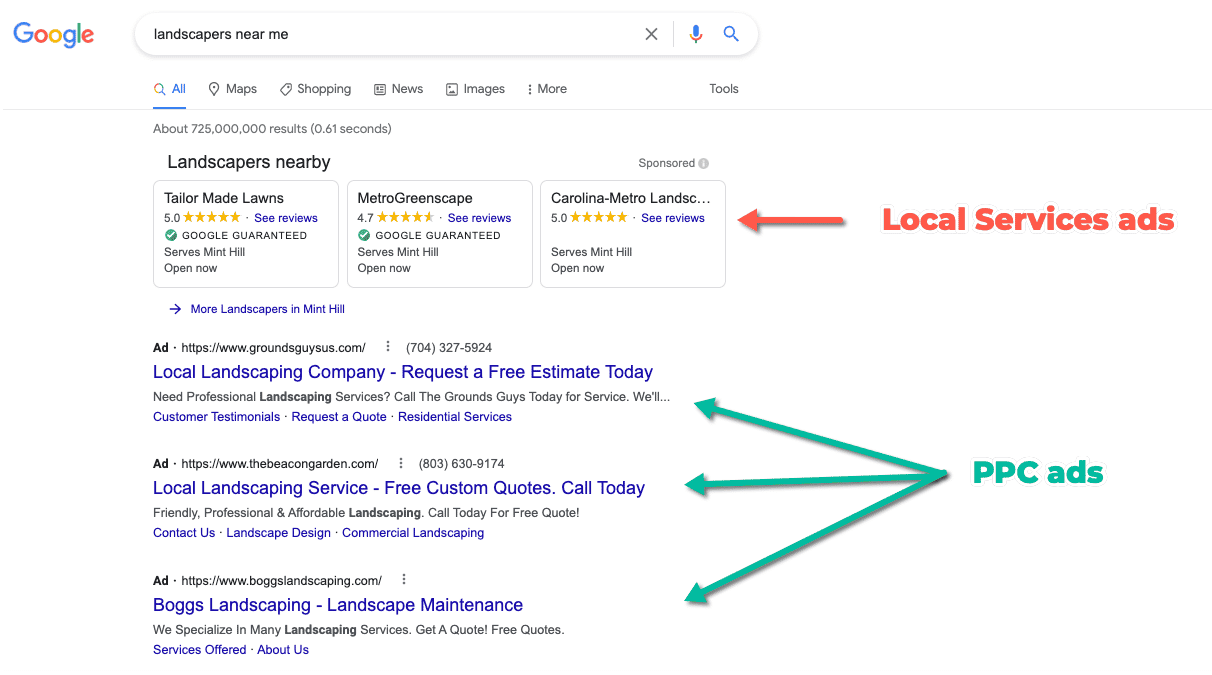Google Ads Update
14 days. That’s the amount of time it took for Google to announce another change coming to their Google Ads platform. On February 4th, Google shocked the SEM world by informing us that BMM (Broad Match Modifier) would soon be a thing of the past. Then, just two weeks later on February 18th, they came out with another announcement, notifying users of their ads platform that responsive search ads (RSAs) would be the new default ad in Google ads.
This change will challenge us to reexamine our ad copy strategies and entertain the idea of even more automation.
The TL:DR Version
This change isn’t THAT off the wall. Also, Google had previously established including at least one RSA per ad group as a best practice.
But before I get too far ahead of myself, let’s talk a little bit about what RSAs are and how to use them in your paid search campaigns!
What Are RSAs?
“Responsive search ads let you create an ad that adapts to show more text—and more relevant messages—to your customers.” – Google.
Seems great, right? Absolutely! But to get the full benefit from Google’s responsive search ads (RSAs), you have to understand what they are and how they work.
RSAs are Google Search ads that allow an advertiser to use multiple headlines and descriptions beyond the standard expanded text ad (ETA). Google allows for an RSA to have up to 15 headlines (ETAs allow 3) and up to 4 descriptions (ETAs allow 2). Using their machine learning algorithm, Google takes the headlines and descriptions you enter and creates an ad in ETA format to serve potential customers.
By adapting your ad’s content to match customer intent, RSAs intend to serve your customers the most relevant ad(s) possible based on their search queries. Additionally, Google will try to maximize performance across various devices, audiences, locations, etc. In doing so, it is able to use this data to serve the most relevant ad for that specific user.
Moving a level deeper, Google will test different variations of an RSA over time. In doing so, their machine learning helps to reduce the need of building countless ETA combinations. By adding in as many headlines and descriptions as possible (kudos if you can nail down 15 headlines and 4 descriptions), you are giving Google more opportunities to serve ads that more closely align with your potential customers’ search demand.
Using RSAs to Boost Conversions
By announcing that RSAs are now the default ad in Google Ads, we can speculate (especially based on Google’s track record), that just as standard text ads met their eventual end, ETAs are likely to experience a similar fate. While we don’t have any confirmation from Google that ETAs are going to be discontinued any time soon, we can future proof our ads accounts by understanding how to use RSAs and maximize their efficiency.
To further encourage the use of RSAs, Google claims, “… We’ve seen advertisers that add responsive search ads in their ad groups achieve up to 10% more clicks and conversions.” While 10% doesn’t seem to be an incredibly drastic shift in strategic value, it is enough to propel advertisers into implementing RSAs more frequently in their search campaigns.
RSA Best Practices
As with anything in Google Ads, implementing a strategy is half the battle. Knowing how to utilize them and incorporate Google’s best practices will help boost your ad performance and ultimately lead to a greater likelihood of conversions for your business.
- Implement at least 2 ETAs and 1 RSA in every ad group. Since we can still use ETAs in our ad strategies, it is ideal to still leverage the historical data we have from those, while allowing Google the opportunity to run its test with at least one RSA.
- Use as many headline positions as possible. While 15 headlines may seem daunting, the more you can incorporate into your RSAs the better.
- Use existing ad content. Data is a good thing, so why not leverage it? By using existing content from your current ETAs, you can make data-driven decisions in regards to which headlines and descriptions are already working and give your RSAs a solid head start. Bonus! You don’t have to feel overwhelmed. Using your current ETA assets makes building a robust RSA much easier!
- Use keywords in your RSA assets. Just like with ETAs, Google likes to serve ads that are most relevant to your searcher’s queries. Relevancy across the customer search experience is extremely valuable to your ads.
- Use pinning cautiously. Google does allow you to pin ad assets so that they always show in their pinned position. In some cases, this is necessary for branding purposes, but in many cases, pinning headlines (or descriptions) defeats the intended purpose of RSAs – creating the most tailored ad for your potential customer based on their search intent.
Optimizing Your RSAs for Success
Once your RSAs are in place, Google’s machine learning will kick in. You’ve incorporated Google’s best practices for RSAs and now you’re ready to see those conversions start rolling in. While RSAs are intended to do a lot of the testing nitty-gritty, it is still important to continually check in on your ads just like you would for ETAs. Google’s machine learning algorithm is powerful, but it’s not a fail-safe. With Google pushing marketers to implement RSAs across all ad groups, leveraging additional tools in Google ads, you have the potential to set your ads apart.
Tips to Improve Your Responsive Search Ad Performance
- Use the “Ad Strength” feature built-in on the Google Ads interface. Google grades each responsive search ad on a scale of “Poor” to “Excellent” and notes that ads with an “Excellent” rating see 9% more clicks and conversions on average.
- Incorporate location insertion and countdown customizers in your ads to help boost overall relevancy for your potential customers.
- Use smart bidding (wisely) with broad match keywords (again… wisely) in campaigns with responsive search ads to help maximize your ad’s total reach.
- Review your cross-campaign asset reporting to better understand which of your ad assets resonate the most in the customer journey.
While some of the above can be more challenging for the everyday Google Ads user, there is one feature that is extremely beneficial to your RSAs’ success and is very user-friendly.
Ad Strength. Using this built-in feature gives you immediate insight into the health of your RSAs, and all it takes is hovering over the rating in the “Ad Strength” column found in the Google Ads interface. The Ad Strength pop-up is a quick and effective way to make changes on the go and ensure your RSAs are positioned for success.

Embracing the Change
Changes in the world of digital marketing happen so frequently that it’s pretty typical to see a Google announcement and experience the gamut of emotions all at once. Sometimes these changes really do warrant panic, frustration, and anger. Meanwhile, there are changes like Google announcing that RSAs would be the default search ad that truthfully serves merely as a formality. Google has been pushing for the use of RSAs for some time now.
We get it though! Seeing the phrase “default ads” does bring a sense of urgency to the table. It makes you wonder if your current Google Ads strategy is in the right place or if you immediately will start losing conversions. Including responsive search ads into your campaigns should always be left to a PPC professional who knows fully understands Google’s best practices. Your digital marketing partner should already be making these changes for you to positively increase performance from your PPC campaigns.
But, if you’re still concerned about this change or just don’t have the time to ensure your account is equipped with RSAs, don’t worry! We have you covered. Our team of industry experts is up-to-date with all of Google’s changes, and we are ready to help you continue to grow your business.
Blue Corona Is a Google Premier Partner
Blue Corona is a Google Premier Partner—a distinction awarded to the top 3% of marketing agencies in North America. If your PPC campaigns are struggling to generate clicks, or your cost-per-lead from Google Ads leads are too expensive, send us a message.
Our team manages more than $2 million dollars of Google Ads spend every month on behalf of our clients and has a proven track record of measurably improving the performance of local business’s PPC campaigns:
- Increasing leads and sales from Google Ads
- Optimizing PPC campaigns for lower cost-per-clicks and cost-per-lead
- Differentiating brands online from the competition by capturing more impression share on Google Ads
PPC Management Services for Home Service Companies
Contact us online to learn more about how our PPC management services will grow your business.




Recent Comments